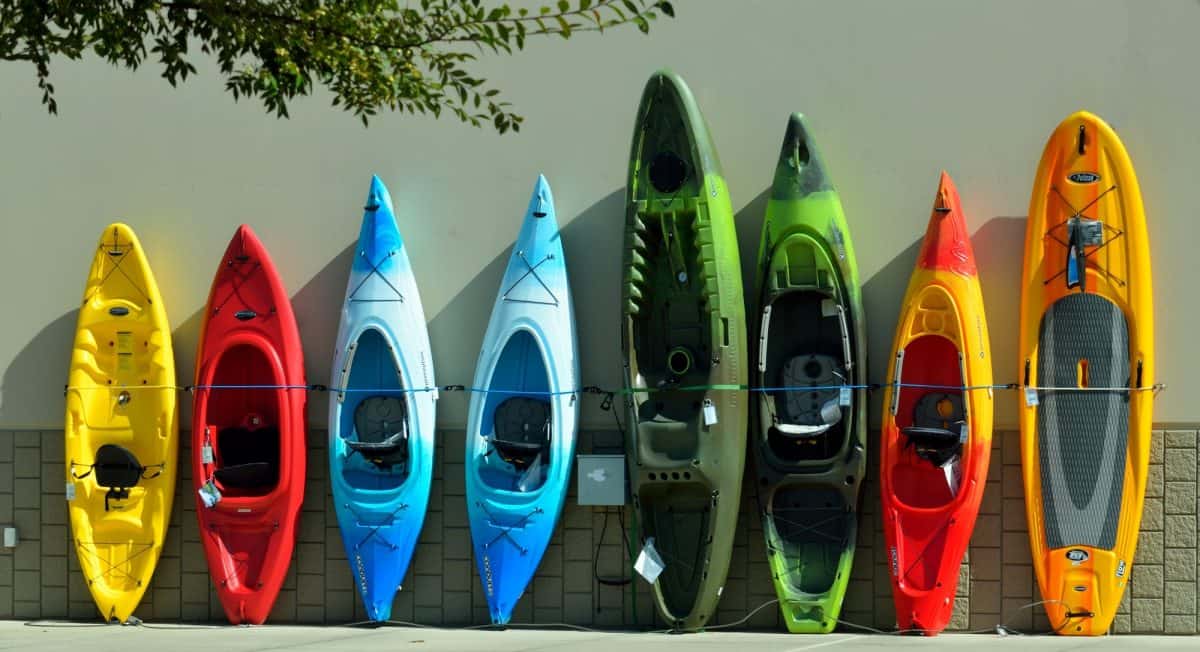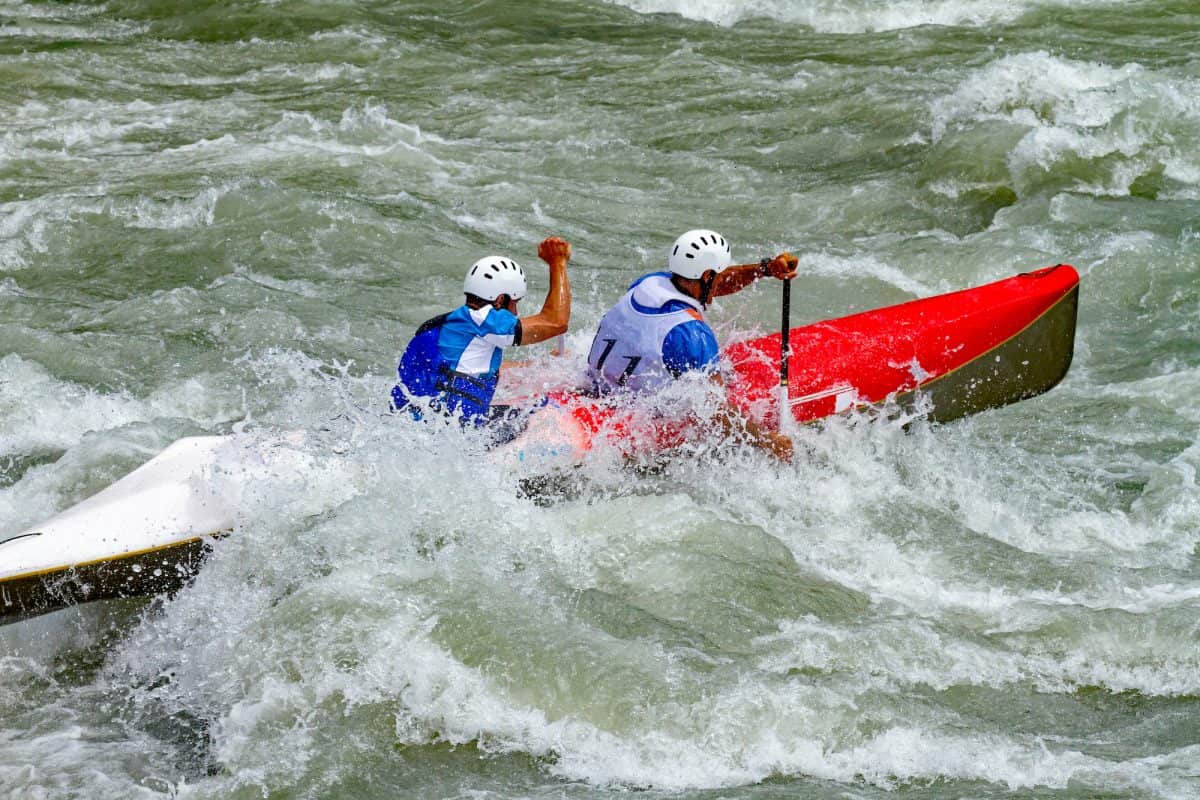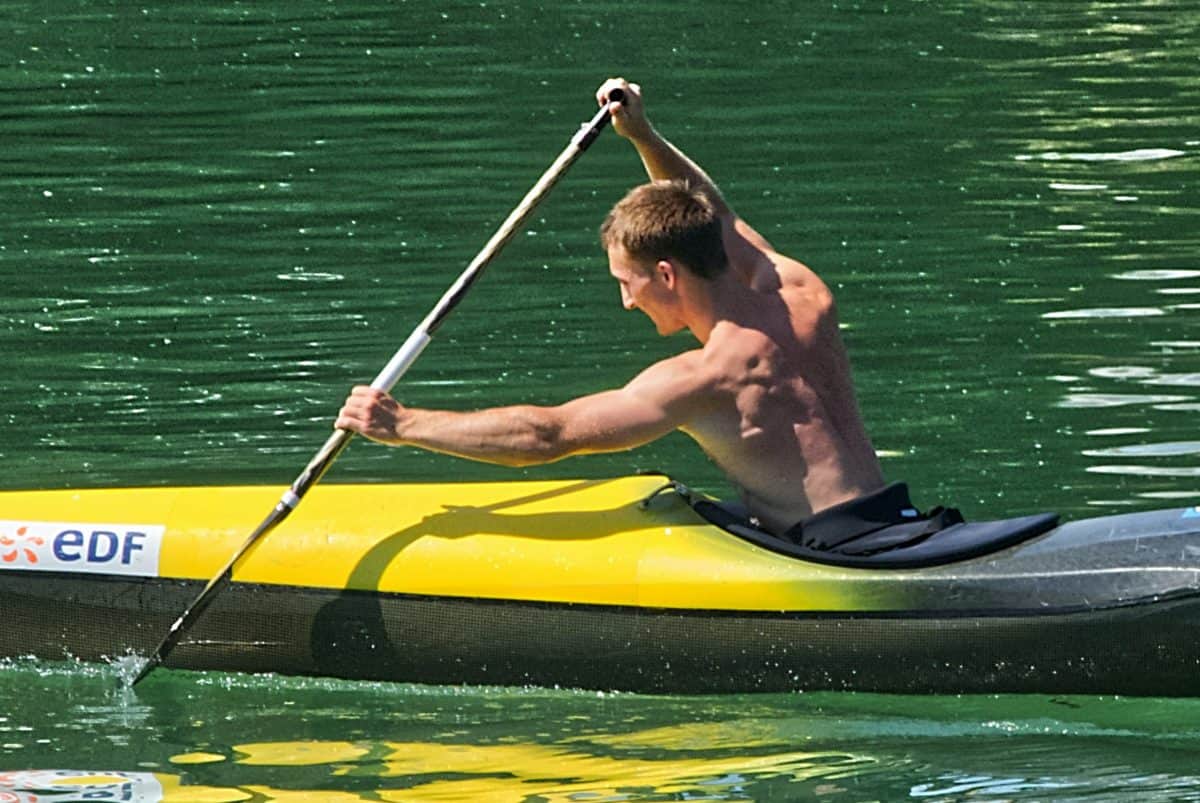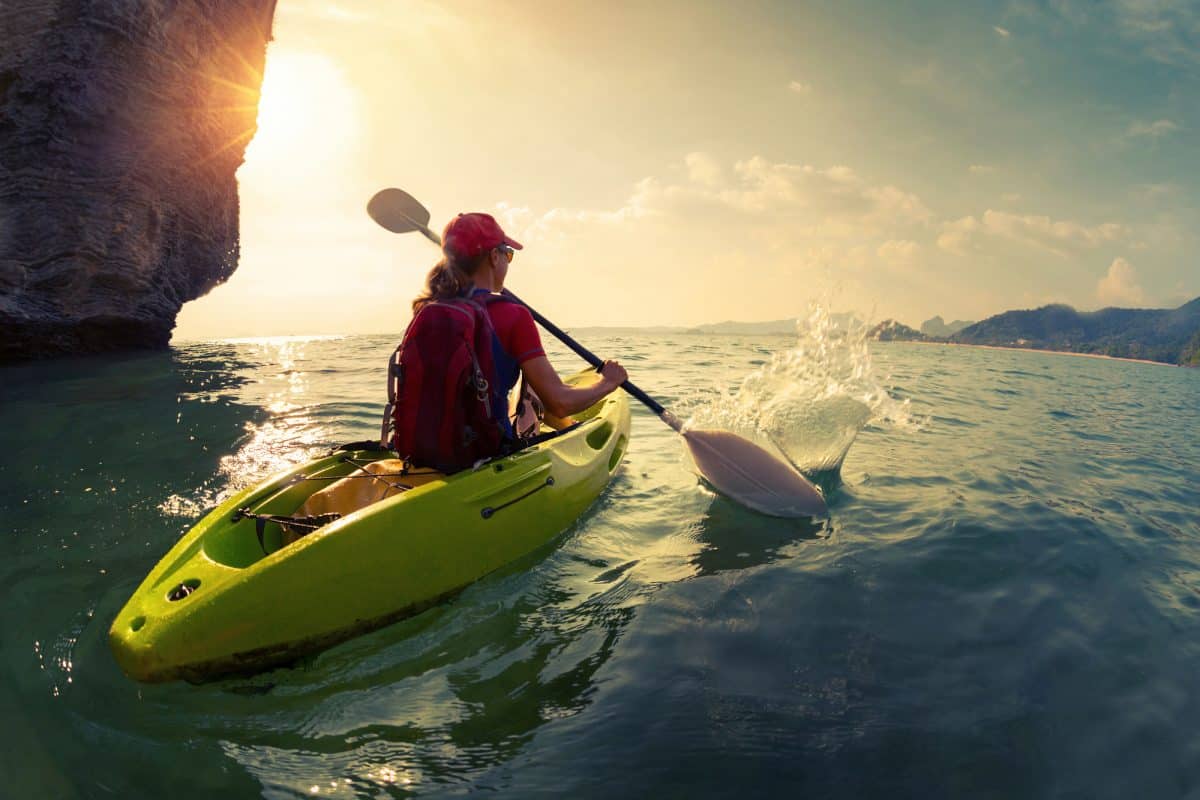Have you ever wondered how long it takes to kayak a mile? While the answer may seem straightforward, several factors can influence your kayaking speed and, consequently, the time it takes to cover a mile on the water.
On average, it takes around 20 to 30 minutes to kayak a mile, but this can vary significantly depending on factors such as:
- Kayak type and design (e.g. racing, touring, or fishing kayaks)
- Paddle type and efficiency
- Your experience level and paddling technique
- Water conditions (e.g. currents, waves, and wind)
- Total weight of the kayak, equipment, and passengers
We’ll explore each of these factors in detail and provide insights into how they affect your kayaking speed.
By the end of this article, you’ll have a better understanding of the variables that influence kayaking speed and be equipped with the knowledge to optimize your performance on the water.
How Fast Does a Kayak Go?

Factors such as vessel type, weather, and water conditions, and your experience can contribute to – or take away from – paddling speed.
But beyond all that, there’s a limit to how far a paddler can push their kayak speed-wise.
This theoretical maximum speed – referred to as the hull speed – outlines how fast a kayaker can paddle a kayak before it starts to plane.
Planing is the watercraft’s transition from a purely hydrostatic lift, or buoyancy, to hydrodynamic lift. The hull lifts to the water level and appears to glide on top rather than push through it.
If you’re willing to do the math, use this formula to determine the maximum hull speed:
Maximum Hull Speed = 1.34 x (Square Root of the Length of Kayak’s Hull at the Waterline)
6 Crucial Factors That Can Affect Your Kayaking Speed

In ideal conditions, the average time needed to paddle a mile in a kayak will be around 20 to 30 minutes.
But, as we all know, real-life paddling conditions are often far from ideal, meaning that this number could vary depending on several factors.
If you’d like to know how long does it take to kayak a mile, let’s go over all the variables involved!
1. Type Of Kayak

Speed and the length of your kayak are very much connected, as you saw previously.
But if you’d like to know how long does it take to kayak a mile, you have to look at the whole picture. Understanding the different types of kayaks and how the design effects on-the-water handling is essential here.
Here’s the thing:
If all other conditions and factors remain equal, the kayak type you use will have the biggest impact on the time to paddle a mile; a narrow-beamed and longer kayak will inevitably be faster than a wide-beamed and shorter one due to its design.
When it comes to the different types of kayak; racing, touring, and sea kayaks – and sit-inside models in general – are better suited for speed than recreational SOTs and fishing kayaks.
So, given that it takes around 20 to 30 minutes to kayak one mile, a long and sleek sea kayak could shave off 10 or so minutes. On the flip side, a much broader angling kayak could easily add 10 minutes – or more – minutes to it.
2. Type Of Paddle

A paddle is a paddle, right?
Well, not quite:
As overlooked as it often is by beginners, the paddle does make a genuine difference in terms of kayaking speed and overall kayaking experience.
A kayak paddle should be suitable for your height, broadness of your shoulders, and the kayak’s width. What’s more, you have to think about your goals – in this case, increasing your per mile paddling speed.
Here, you have two kayak paddle options:
- High-angle paddles, designed to capture and hold water, allow for more aggressive strokes and faster propulsion. These shorter and wider paddles are best suited for narrower kayaks built for speed.
- Low-angle paddles, with long and narrow blades, are designed to cut through the water easier, ensuring less fatigue. They’re best suited for broader, recreational kayaks and more relaxed paddling.
3. Wind Conditions
When it comes to how long does it take to travel a mile in a kayak, wind can either be a paddler’s best friend or their worst enemy. It all comes down to the strength and direction of the air currents.
Kayaks might not have sails, but that doesn’t mean that they won’t catch the wind.
For instance, if you’re paddling downstream and fighting gusts of wind head-on, it doesn’t matter how much effort you put into paddling; you’ll hardly gain momentum.
But if winds decide to work in your favor, blowing in the direction you’re headed, it could take less time to kayak a mile than your usual tempo.
Wind-induced speed boosts do sound tempting, huh?
Still, don’t take adverse weather conditions lightly. If it starts feeling more like an oncoming storm than a pleasant breeze, it’s best to call it quits or postpose your kayak trip.
4. Water Conditions

Do you paddle on calm lakes, turbulent rivers, or out on the sea? Water conditions, obstacles and currents, along with the weather, can affect your paddling speed by 1 to 2 miles per hour – either positively or negatively.
Have you ever tried riding a bike uphill with no brakes? Well, that’s pretty much how paddling against a strong current feels like:
The moment you take a break is the moment you start going backward.
Paddling downstream will help you gain momentum, you’ll be able to paddle faster, and increase your speed per mile, especially if you add fast-flowing currents into the mix.
The same goes for calm, flat waters. Granted, it might not boost your speed, but it will make paddling a lot easier – as you will not need to battle the water.
Another factor that might slow your average kayak speed is you may encounter, and need to circumnavigate, a few obstacles, such as; over hanging trees, floating debris, other kayakers.
Overall, water conditions are heavily influenced by the weather and tide – especially ocean currents. So, if you are trying to be faster on the water and set a personal ‘paddle a mile’ record, keeping an eye on those two factors will shave off some serious time.
5. The Weight You’re Carrying

Another factor that plays into how long it takes to kayak one mile is the total weight you’re carrying, including the kayak’s weight, equipment, and any additional passengers.
The extra weight acts as an anchor and slows you down, regardless of your efforts.
I love kayaking with my son, but realistically speaking, I can never clock in the same miles per hour as I would if I were paddling alone. I’m fine with my favorite little passenger impacting my speed, though.
However, if you’re hoping to travel faster, keep things as light as possible. The lighter the load in your kayak the faster you will travel, the easier the paddling; it’s as simple as that.
Also bear in mind, the choice of kayak construction material will have a bearing on the weight.
6. Paddler’s Physical Ability & Experience

If you walked into the gym for the first time, you wouldn’t go straight for the weight lifting station and expect to match an experienced powerlifter, now, would you?
Well, the same goes for kayaking:
Your experience and physical capabilities – coupled with proper form and technique – affect how fast you can swing that paddle and propel your kayak across the water.
First time or beginner paddlers who are yet to develop their kayaking muscles, increase endurance, and improve their stroke’s efficiency can’t compete with experienced kayakers.
But as your muscle coordination develops, especially if aided by kayak focused gym exercises, you perfect your paddling technique and muscle memory builds, you’re bound to boost your paddling speed – and the time it takes to travel a mile will decrease in relation.
Addressing The Question That Counts: How Fast Can You Paddle a Kayak?
The factors discussed above, although classified as pure theory, can certainly give you some insight into how long kayaking a mile might take.
But here’s the thing:
Theoretical knowledge won’t swing your paddle for you.
The real question here is how fast you can paddle a kayak – and how well you can apply the stuff you learned today into real-life kayaking scenarios.
A more experienced, physically fit kayaker that’s already mastered the paddling technique may feel comfortable kayaking around 3 miles per hour. Beginners and recreational paddlers will likely clock in average kayak speeds of approximately 2 miles per hour.
That’s a far more realistic scenario for most of us, in line with the average 20 to 30 minutes needed to be able to paddle a kayak a mile.
However, seasoned professionals with top-of-the-line kayaks able to paddle round 5 miles per hour – or higher. On that note, here are a few mind-blowing kayak world records related to kayaking speed and distance, including how far can you kayak in a day:
- The world record for racing kayak’s speed is 19.2 miles per hour.
- The world record for how far you can the most flat water distance covered with a kayak in 24 hours is 156.41 miles. An average speed of 6 miles per hour – that’s some superhuman endurance and miles covered
- The world record for the most flowing water distance covered with a kayak in 24 hours is 231.1 miles – a crazy average speed of 9.6 miles per hour.
Wrapping It Up
Although “how long does it take to kayak a mile” sounds like a simple question, the answer depends on several factors – and varies from one paddler to the next.
The only real way to respond to it is with some rough estimates and general guidelines:
Given the best possible conditions, it should take the average paddler around 20 to 30 minutes to kayak a mile.
Again, it depends on the paddler’s experience and endurance, water and weather conditions, and the design of the kayak, among other things.
Sure, as a beginner kayaker you might start at a speed of about 2 miles per hour. But as you grow and improve your technique, you may notice an increase in how fast you can kayak, and the time you take to kayak any distance drop.
